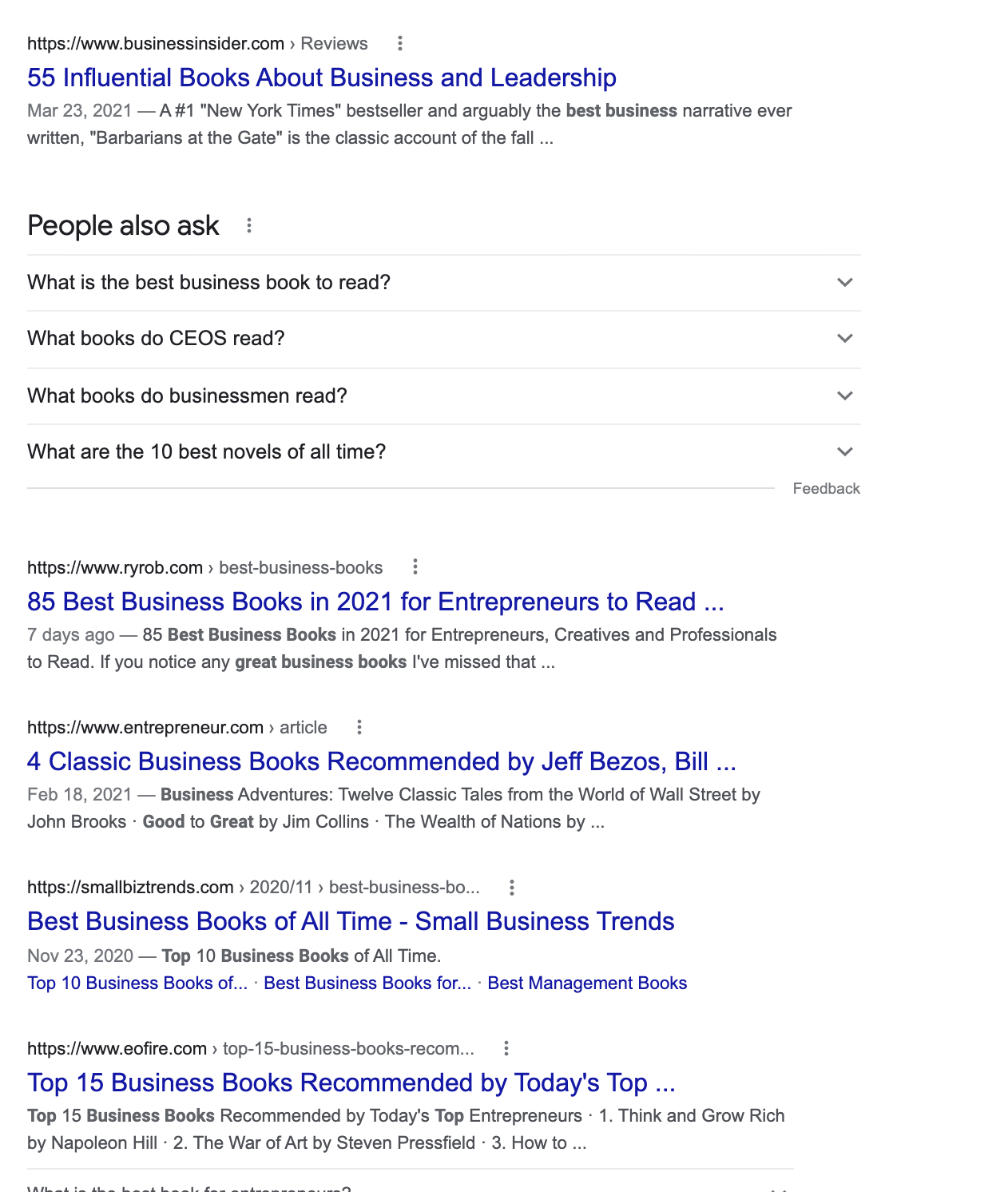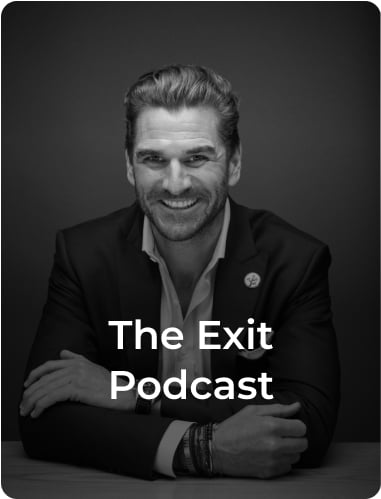“Search intent” is a search engine optimization (SEO) term that refers to a person’s intention or goal when performing a web search.
Understanding and catering to search intent on your eCommerce website can help bring in more quality traffic.
In this article, we’ll discuss search intent, how it relates to eCommerce SEO, and offer valuable tips and strategies to help you drive more sales from search.
Search Intent for eCommerce Websites
Google likes ranking sites to help people reach their goals, although this is not always easy.
For example, if I search for the term “best business books,” the results I get are a variety of lists containing business books, as shown below:

Other times, you’ll find what’s known as mixed intent.
Mixed intent occurs when a user searches for a term that may have different objectives.
For example, someone searching for the term “backpack” may want to:
- Visit a website to browse the different backpacks available.
- See a list of types of backpacks available.
- Know where they can buy backpacks locally.
- Learn more about buying backpacks.
This mixed intent is reflected in the search results for the keyword “backpack,” as the search engine result pages (SERPs) contain images of backpacks, product pages, resource guides, a “People Also Ask” section, news about backpacks, best-of lists, and more.
When there’s mixed intent like this — which is often the case for product terms that eCommerce sites like to rank for — Google is telling you the different goals users have when typing a query into the search box.
Types of Search Intent
Most searches fall under one of four main categories:
- Commercial. The searcher is looking for information to help them make a buying decision.
- Informational. The searcher is looking for help in answering a question or learning more about a specific topic.
- Navigational. The searcher is looking to go to a specific place, such as Facebook.
- Transactional. The searcher is looking to make a transaction.
A lot of eCommerce websites focus their keyword strategy on transactional intent. After all, this is where a lot of the buying is done.
However, this often provides the smallest set of keywords to go after as they tend to be the most competitive.
More importantly, Google’s priority is to provide information that helps users accomplish a specific goal. The search process for a user isn’t always as simple and linear as marketers want it to be.
For example, a searcher may start with transactional intent, but before a buying decision is made, they may go back to informational intent because they don’t have all the information they need to make a decision.
This is often the case with more complex transaction decisions, where consumers are constantly learning throughout the buying process.
Building Out Your Keyword Strategy
Let’s say your eCommerce that dropships eco-friendly backpacks.
When trying to decide what keywords and pages to create, it’s important to look at the range of search intents that exist for keywords you’re considering. Most importantly, make sure your product actually fulfills the user’s intent.
Fortunately, Google does a lot of the hard work for you when it comes to identifying intent. Pages currently in the SERPs are the best indicator of the range of intents users have.
A good starting point is looking at the range of intents for the first page of your primary keyword. From there, organize those into the four main types of search intents while noting the secondary intent behind the page.
Using the seed keyword “backpacks” as an example, here’s what this would look like:
Commercial Intent
#3) Best Everyday Backpacks
#4) Best Laptop Backpacks
#8) Best backpacks for College Students
#9) Best Backpacks
Informational
#5) How to Choose a Backpack
Transactional
#1) Amazon Product Page
#2) Target Product Page
#6) Timbuk2.com Website
#7) Women’s Backpack on Nordstrom.com
#10) Ebags Website
Here’s an early takeaway according to this analysis:
- For a term like “backpacks,” searchers are looking to visit a page that lets them view options. Each of the transactional and commercial pages in the SERPs contains a variety of choices. Ranking a page for the keyword “backpacks” when you sell eco-friendly backpacks would be next to impossible as it doesn’t satisfy user intent.
- There is still need for information as a “How To” guide occupies spot #5 in the SERPs. Websites that have a really good backpack buyer’s guide may then be able to reduce their bounce rate/exit rate.
- The top categories searchers like to see here include “everyday backpacks,” “laptop backpacks,” and “best backpack for college students.” While you’re highly unlikely to rank for these terms when selling eco-friendly backpacks, it does provide some insight on what types of backpacks people are most often searching for. You can use this information to structure your website as well as the copy of your landing pages.
Eco-friendly Backpacks eCommerce Strategy
A common mistake made by eCommerce websites is going after large keywords, often known as head-terms, when your product or service doesn’t satisfy the intent of that search.
This was the case with the example of the eco-friendly backpack company trying to rank for the term “backpacks.” No matter how many links they build to that article, they’re not going to rank for a keyword where they don’t satisfy intent.
Let’s re-do our SERP analysis with the keyword “eco-friendly backpacks.”
In the SERPs, we get:
- Eight “best of” lists, representing commercial intent.
- One Amazon product page for eco-friendly backpacks.
It’s not until result #13 that we see an informational intent, which is a guide to shopping for eco-friendly backpacks. The only transactional page in the top 10 is Amazon at #6.
The first takeaway here: It would still be difficult to rank for this keyword with a product page. Your best chance would be creating a “best eco-friendly backpacks” list, even if doing so involves mentioning your competitors.
It’s not until we get to longer-tail keyword terms where product pages begin to take over the SERPs. For example, for the term, “ocean plastic backpack,” the first six results are transactional product pages featuring only one backpack to choose from.
Here, Google is telling us that people who search this term are much further along in the buying process. Creating a product page for this keyword will indeed satisfy user intent and have a chance to get rank.
Your Next Step
Traditional keyword research — where you’re aiming to find the right mix of high demand keywords with low difficulty — is becoming less important. Google continues to get progressively better at satisfying searchers’ needs, regardless of what they’re typing into the search box.
By completing the steps above, SEO then becomes a game of delivering the most value to your website visitors.
The best SEO strategy is to focus on search intent specifically and structure your website so that your pages match the intent of the searcher. Make sure your website as a whole satisfies the entire user journey.
Recommended for you
Discover more from Flippa
Subscribe to our Blog
Get the latest blog posts, insight reports and news directly to your inbox every week.



















